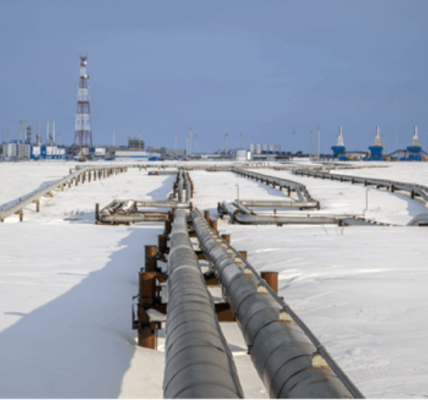Local history was made in Cambridge Bay, Nunavut, Thursday when a group of high-level visitors — including Prime Minister Justin Trudeau, three of his key ministers, and Jens Stoltenberg, the Secretary General of NATO — spent several hours in town.

Their arrival, which also coincided with an ongoing military exercise, Operation Nanook-Nunakput, made the event “very very big,” Cambridge Bay’s deputy mayor Derek Elias said. “This kind of tops it up for VIPs.”
“It was a good chance for them to really see that Arctic sovereignty is very important to us, people that live up here in the North and especially now with world conflicts happening, Russia, Ukraine, potentially North Korea and China,” Elias said.
“It’s very important that we do everything we can to protect our Arctic and Arctic sovereignty — and defence is very important.”

The stop also provided Cambridge Bay a chance for the growing community of about 1,800 to show off its accomplishments, Elias said — and its infrastructure.
These include the Cam-Main radar station run under the North Warning System, part of the North American Aerospace Defence Command, and the Canadian High Arctic Research Station (CHARS), which offered the visitors a tour of its science facilities, and lunch.
But first, in the circular qaggiq-shaped foyer, which features some of the research station’s collection of Inuit art, elders dressed in western Arctic-style kalikot parkas awaited the arrival of the VIPs.
As she lit the qulliq to welcome the guests, Eva Kakolak Avadluk, honoured in 2015 as Nunavut’s wise woman, described herself to Trudeau and others as “one of the youngest elders.”

Speaking to reporters at CHARS, Stoltenberg said his visit underlined Canada’s importance to the Arctic, while Trudeau had a message about defence as well as about the importance of northern residents.
“We can never forget that sovereignty doesn’t come through soldiers or scientists,” Trudeau said. “It comes through the people who have lived here for millennia. Everything we do here has to not just be in support of them but drawing support from them for everything we do.”
Of course, there was also food at CHARS — including bannock and Arctic char chowder.
For Bob Aknavigak of the Kitikmeot Inuit association, the invitation-only lunch was a chance to talk to Foreign Affairs Minister Mélanie Joly and Dan Vandal, minister responsible for Northern Affairs and the Canadian Northern Economic Development Agency.

“They wanted to know about Cambridge Bay, but we brought up a few of our topics that we’re pursuing at KIA, like Grays Bay,” Aknavigak said.
That project would see a deep-sea port on the Arctic coast with a road down to meet the southern road network in the Northwest Territories — and it will need a lot of federal money along the way.
“We brought that to their attention,” Aknavigak said. “We exchanged information, which was good, and they will certainly take stuff we brought up back to Ottawa.”
Aknavigak also showed Trudeau a copy of a photo taken in the 1960s of Trudeau’s father, Pierre Elliot Trudeau, drum dancing in Cambridge Bay.
Aknavigak said he was in residential school at that time — but his wife is in the photo, he added.
Trudeau was wowed by the photo, Aknavigak said.

Overall, Aknavigak said he was impressed by Trudeau’s ability to communicate, particularly with elders, as he kneeled down at their level to speak to each one.
“He was so kind and gentle,” Aknavigak said.
People in the community also had their chance to meet Trudeau and pose for selfies, when the prime minister visited the community’s heritage park, which includes buildings showing the development of the town.
Also near the park is the Red Fish Studio, which is helping young people get the certification they need to become welders’ apprentices.
Instructor Mark Slatter called his young welders, who showed everyone around, “rock stars.”
The visitors admired the giant Sedna statue, on view in a corner of the studio, which will eventually be installed near the Governor General’s Rideau Hall residence in Ottawa.





It’s great to see discussions about Arctic sovereignty gaining momentum! Collaborating with the communities in western Nunavut is essential for ensuring their voices are heard in these important conversations. Together, we can build a stronger future for the region.